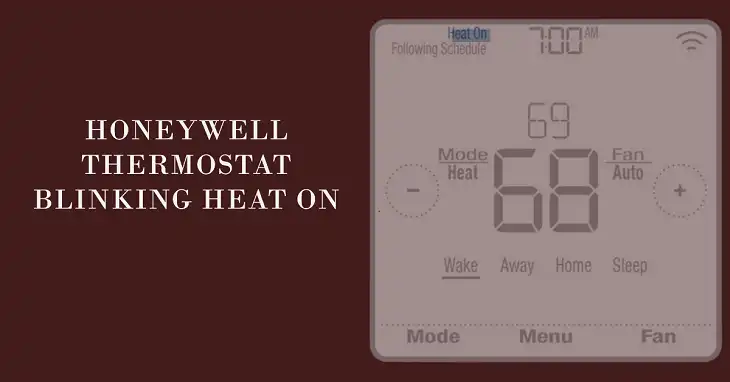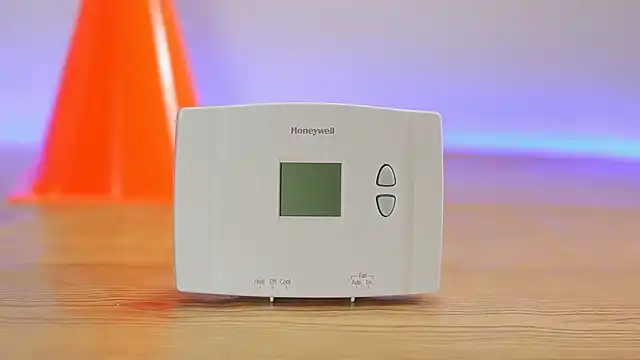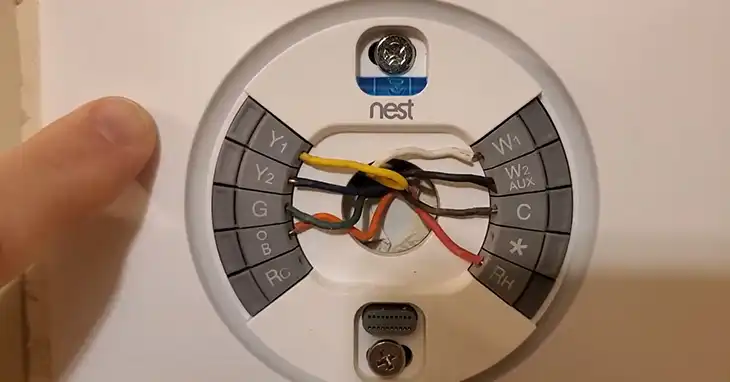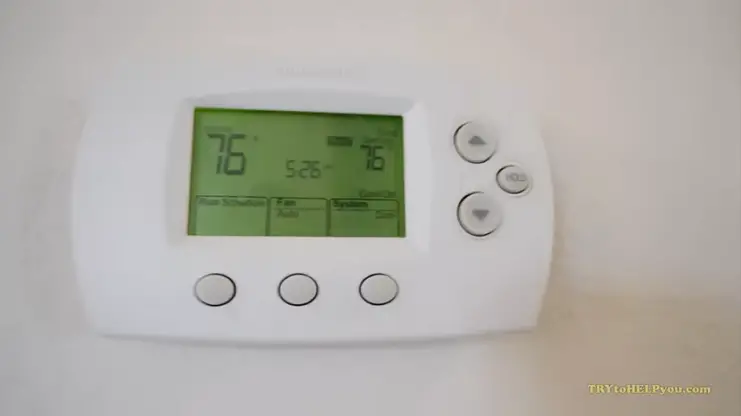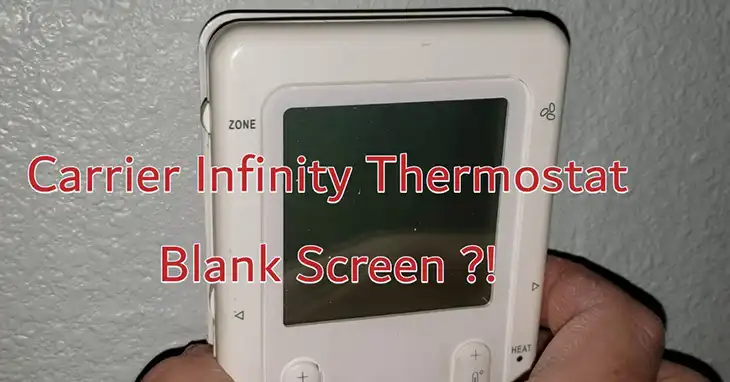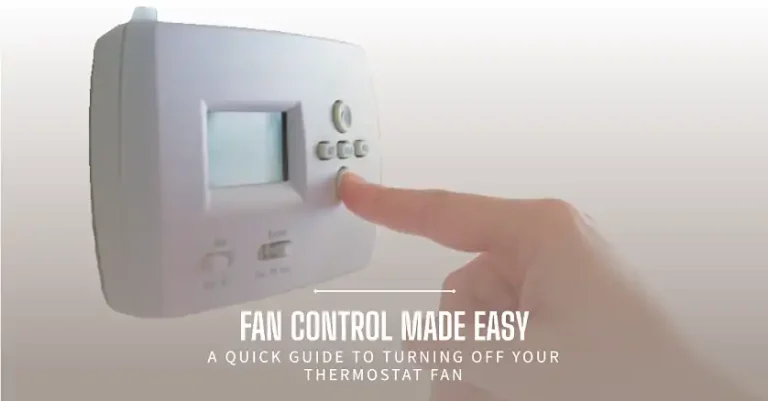What Does a Thermostat Do If It Gets Too Cool?
Have you ever wondered what happens when your thermostat detects that your home is getting too cool? A thermostat is a device that monitors and controls the temperature in your living space. Its primary function is to maintain a desired temperature by automatically adjusting your heating and cooling systems.
When a thermostat gets too cool, it will respond by either turning on the heat or turning off the cold air. This action is similar to how the human body reacts to temperature changes
In this article, we’ll explain how a thermostat works, how it detects cold, and most importantly how to troubleshoot if your thermostat becomes too cool on a regular basis. Let’s go.
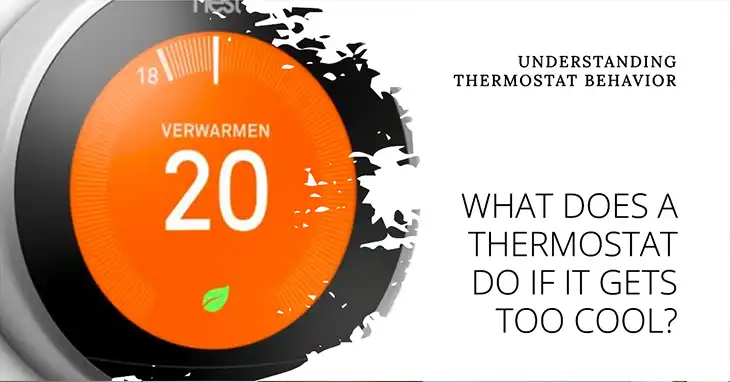
How a Thermostat Detects Cold
At the heart of a thermostat lies a temperature sensor. This sensor is designed to continuously measure the current room temperature. The most common types of sensors used in thermostats are bimetallic strips or electronic sensors. These sensors detect even the slightest changes in temperature and relay that information to the thermostat’s control system.
Turning on the Heat
When the thermostat detects that the room temperature has fallen below the desired set point, it initiates the heating process. The thermostat compares the measured temperature to the set point and calculates the temperature difference. Based on this difference, the thermostat sends a signal to the heating system, such as a furnace or boiler, to turn on and start producing heat.
Maintaining the Set Temperature
Once the heating system is activated, the thermostat continues to monitor the room temperature. As the temperature rises and approaches the set point, the thermostat will cycle the heating system off to prevent overheating. This on-and-off cycle continues until the desired temperature is achieved and maintained within a narrow range, typically within a degree or two of the set point.
What Affects Thermostat Performance
It’s important to note that the thermostat’s ability to maintain a consistent temperature can be influenced by several factors. These include:
- Thermostat location and placement: Thermostats should be installed away from direct sunlight, drafts, and heat sources for accurate temperature readings.
- Insulation and air leaks: Poor insulation or air leaks in your home can make it harder for the heating system to maintain a consistent temperature.
- Size and efficiency of the heating system: An undersized or inefficient heating system may struggle to keep up with the thermostat’s demands, especially during extremely cold weather.
- Outdoor temperature and weather conditions: Severe cold snaps or wind chill can impact the heating system’s ability to maintain the desired indoor temperature.
Troubleshooting Cool Temperatures
If your home remains uncomfortably cool despite the thermostat being set correctly, there could be several potential issues to address:
- Check the thermostat settings and batteries: Ensure that the desired temperature is set correctly and that the thermostat has fresh batteries.
- Inspect heating system components: Check for dirty air filters, a malfunctioning pilot light, or other issues that could prevent the heating system from functioning properly.
- Address insulation and air leaks: Seal any drafts or gaps around windows and doors, and consider adding insulation to improve your home’s energy efficiency.
- Call a professional HVAC technician: If the above steps don’t resolve the issue, it may be time to have a professional inspect and service your heating system.
It’s also important to consider that cold drafts or rooms may not always be due to a thermostat issue. Leaks, drafts, or an undersized heating system can contribute to uneven heating, even if the thermostat is functioning correctly.
Alternative Heating Solutions
While a well-functioning thermostat and heating system are essential for maintaining a comfortable indoor temperature, there are alternative solutions that can supplement or provide temporary warmth:
- Space heaters: Portable space heaters can provide localized warmth, but they should be used with caution and never left unattended.
- Supplemental heating sources: Fireplaces, wood stoves, or pellet stoves can provide additional heat and ambiance, but require proper installation and maintenance.
- Passive solar heating and insulation strategies: Maximizing natural sunlight through strategic window placement and improving insulation can help retain heat in your home more efficiently.
Other Frequent Questions
How often should I replace the batteries in my thermostat?
Most thermostat manufacturers recommend replacing the batteries at least once a year, or whenever you notice the low battery warning indicator. Dead batteries can cause the thermostat to malfunction, leading to inconsistent temperature control or failure to communicate with the heating system.
My thermostat is in a hallway, and the temperature seems different from other rooms. Should I relocate it?
Ideally, your thermostat should be installed in a central location, away from direct sunlight, drafts, and heat sources like fireplaces or kitchen appliances. If the current location is not representative of the overall temperature in your living spaces, consider relocating the thermostat to a more suitable area. However, keep in mind that this may require running new wiring and should be done by a professional if you’re not familiar with the process.
Can a thermostat malfunction cause my heating system to run continuously?
Yes, a malfunctioning thermostat can potentially cause your heating system to run continuously, leading to excessive energy consumption and potentially damaging the system. This could happen if the thermostat fails to accurately measure the temperature or if there’s a problem with the wiring or control circuits. If you notice your heating system running constantly, check the thermostat settings and consider having it inspected by a professional.
Is it better to leave my thermostat at a constant temperature or adjust it when I’m away or sleeping?
From an energy efficiency standpoint, it’s generally better to adjust your thermostat to lower temperatures when you’re away from home or sleeping. This practice, known as temperature setback, can save you up to 10% on your heating and cooling costs annually, according to the U.S. Department of Energy. However, if you have certain types of heating systems, such as heat pumps or radiant floor heating, you may need to consult a professional for optimal setback strategies.

